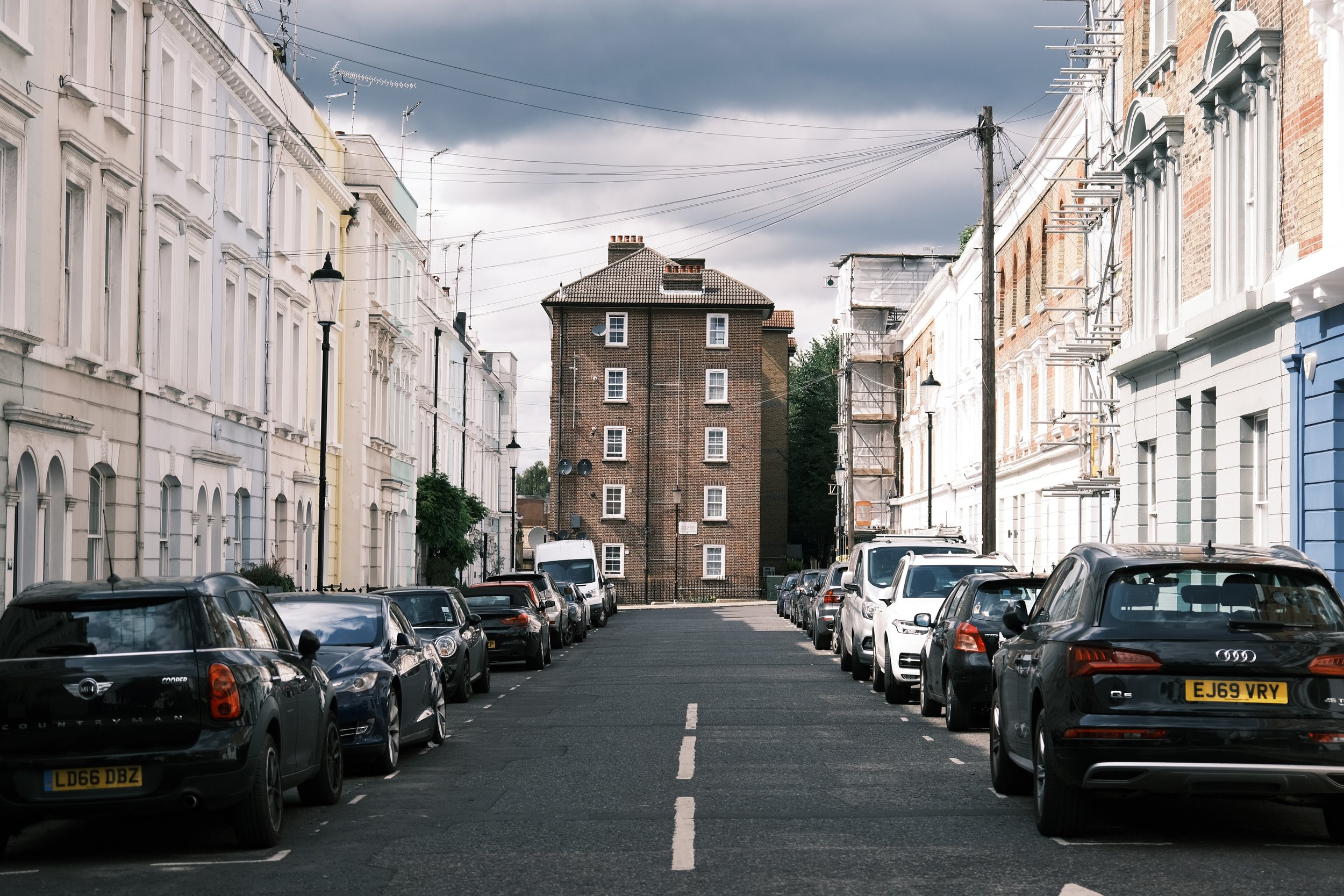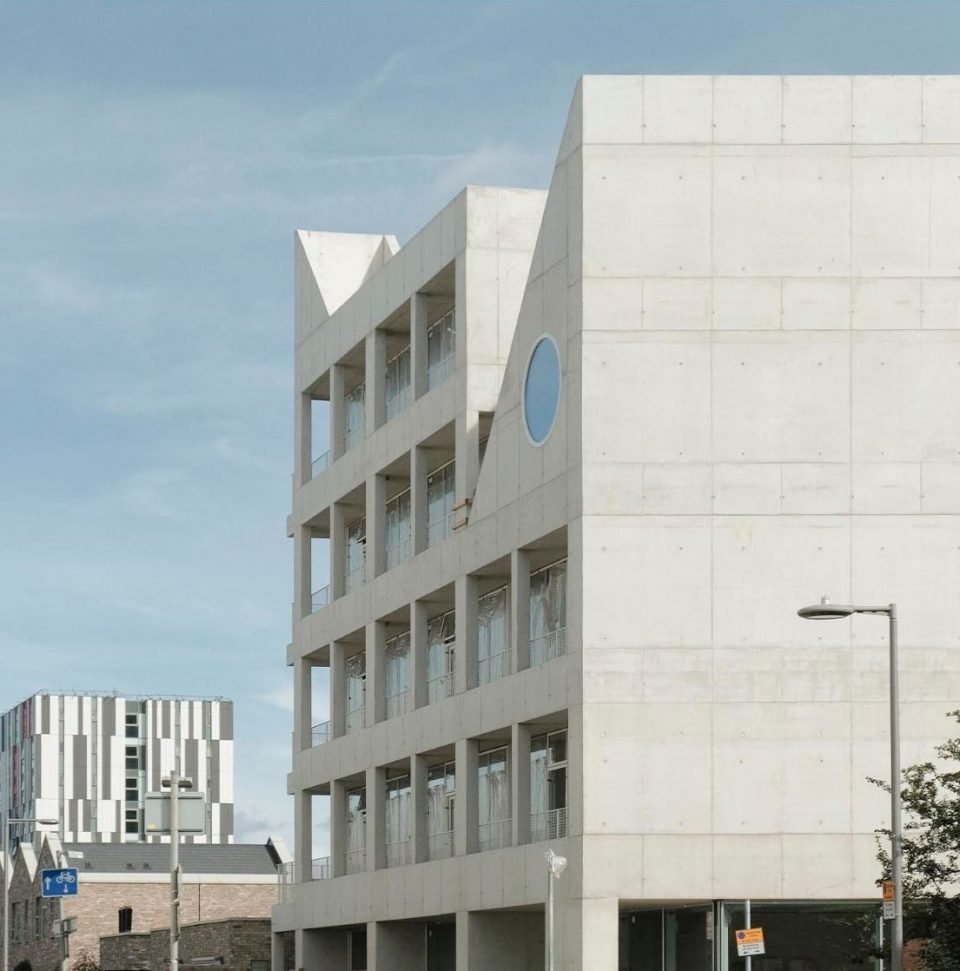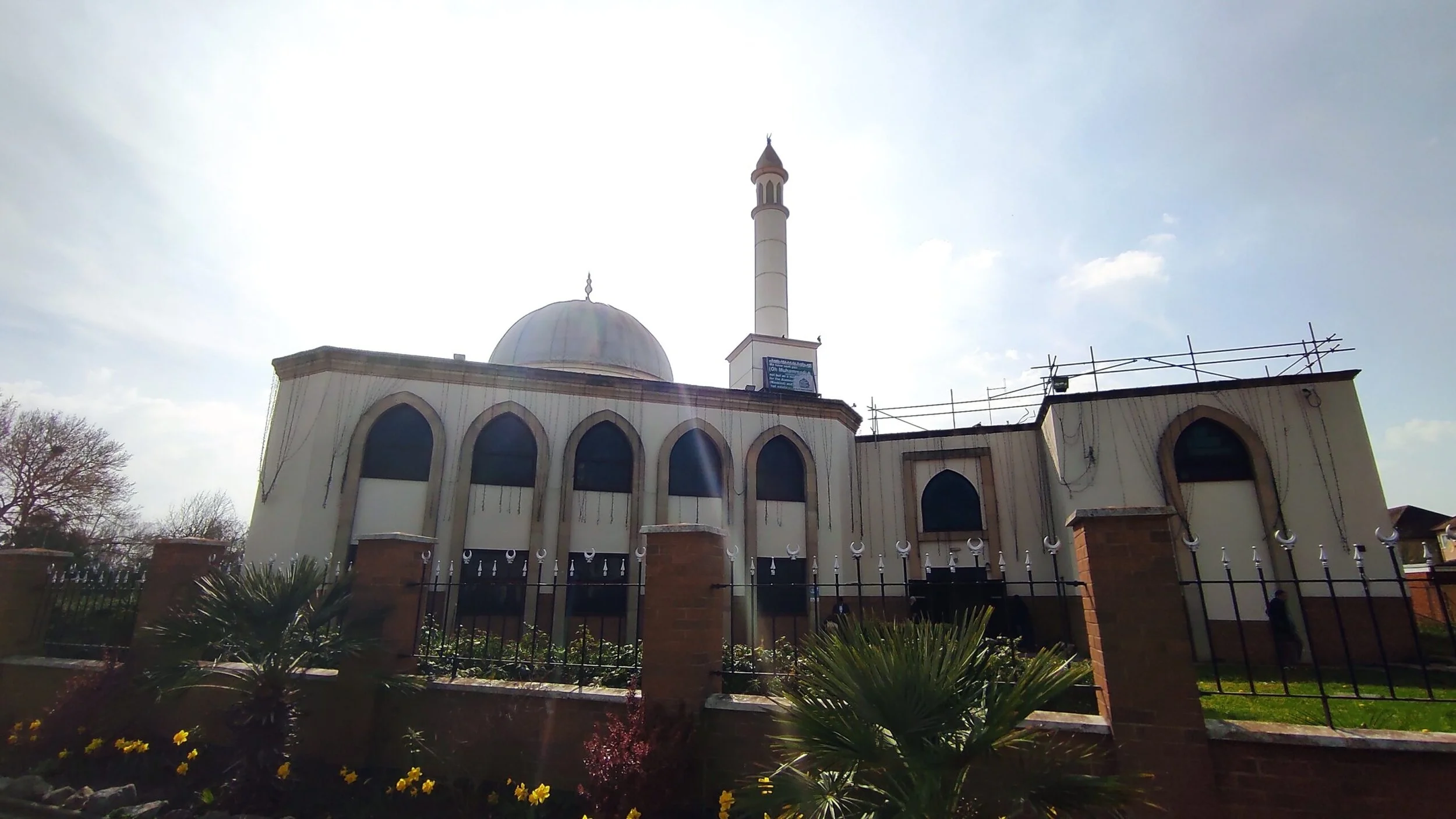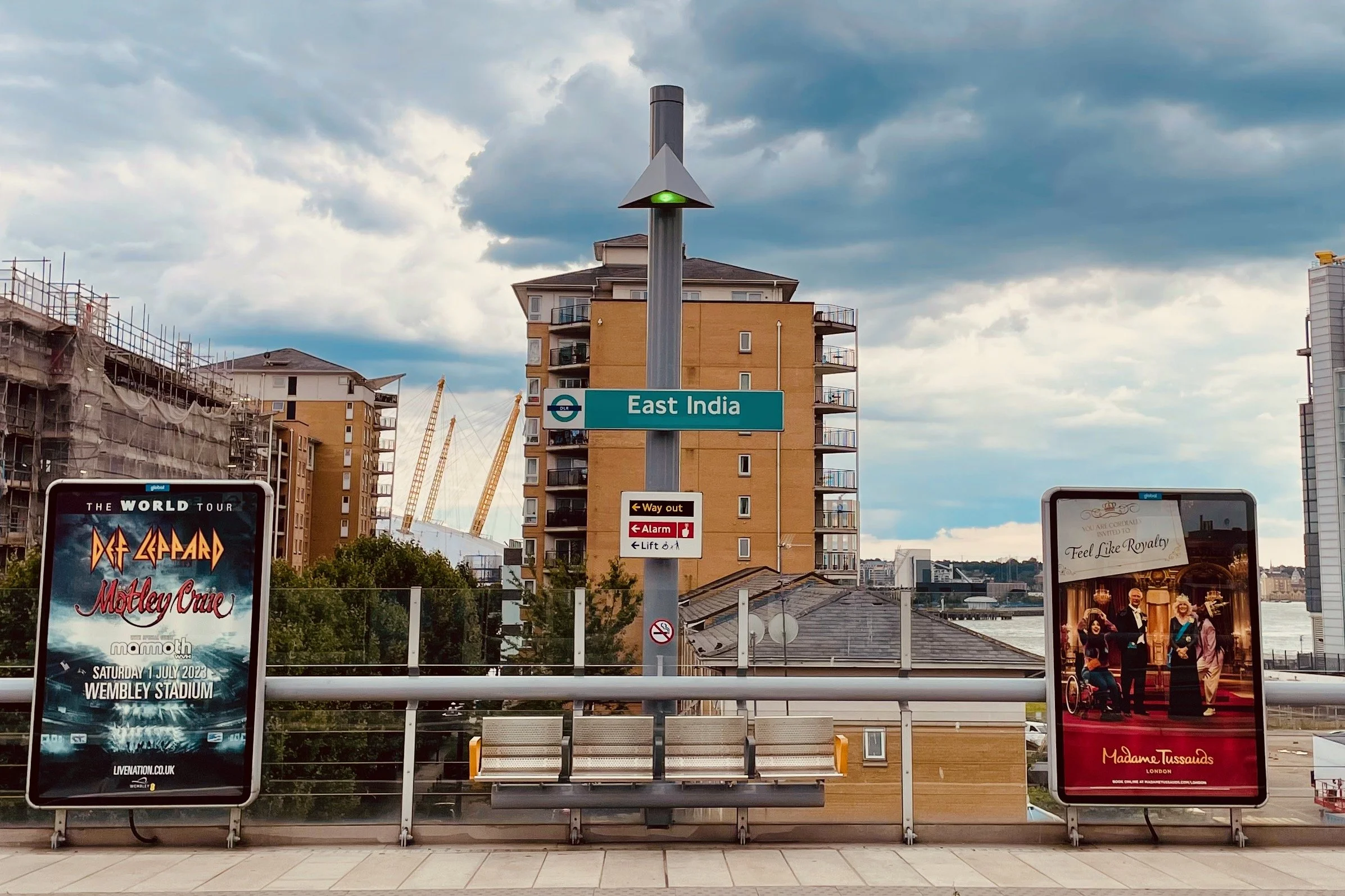City Curator’s Collection: The Life Cycle of London’s Landscape
‘The Life Cycle of London’s Landscape’ is part of the City Curator’s programme, which aims to amplify the voice of young people within the Open House Festival 2023.
The project brings together 15 young people who will work and learn as festival curators, deciding on themes and areas of London they are interested in and want to celebrate.
The curator’s
Khaira is a British-Nigerian architecture undergrad student at the University of Edinburgh, raised in East London. Her diverse surroundings fueled my curiosity about various cultures, driving her ongoing quest to study and appreciate different communities and their traditions.
Lena is a Amazigh-Irish Part 1 architecture graduate from Kingston, with a deep appreciation for vernacular and sustainable design principles. Influenced by her heritage and upbringing, she is passionate about engaging in dialogues that explore the dynamics between culture, community, and architecture; exploring how individuals and communities shape our built environment.
Natalia is a second year BA Architecture student at the University of the Arts London. Her main interest is the social idea of the architecture of happiness. Not only do she believe that people should be at the very focus of architecture, but also included more within the process of design.
Lamis is a Libyan aspiring architect studying at the University of Greenwich. Alongside her architectural pursuits, she serve as a city curator, enhancing her knowledge of urban spaces. Her passion for Islamic architecture drives her to bring positive change, fusing modern design with the timeless beauty of Islamic art and culture.
Fiona is a first generation Ghanaian born in the Netherlands and raised in London, her exposure to a variety of environments has spurred her interest in architecture. Acknowledging how London’s ethnic identity is welcomed within spaces is a focus point Open House has instilled in me and that my enrolment at the University of Westminster will continue to do so.
Collection
The life cycle of London’s landscape starts with history. History becomes an integral part of it from the very inception of its design, enriched through construction, and expands even after the building’s completion.
As people inhabit the landscape, new communities emerge. Over time, the landscape responds to the challenges and stigmas of these communities. Sections of landscape are repurposed for contemporary needs.
As landscapes mature, we are faced with a choice: to either disregard or embrace its historical essence.
How should we respond to history? How should we respond to communities and stigmas? How should we repurpose our buildings and adapt their meaning? This is the life cycle of London’s landscape….
UNMASKING LONDON’S HISTORY: Neglecting Histories, Neglecting Communities
How does hiding the true history of London through changing the landscape affect communities?
Curated by Khaira
London financially benefitted through their participation of the transatlantic slave trade and the British empire. This can be seen through buildings and streets around London, and many people do not realise the implications of this.
I have chosen a panel discussion and a walking tour that not only inform inform you of the true reality of the slave trade, imperialism and colonialism, but also how the lack of their awareness reflects the struggles that many communities deal with today, particularly communities that were formed by migrating to London.
A panel discussion which addresses “Imperial Nostalgia and Commemorations of the 1924 British Empire Exhibition” within Wembley. In the present day, streets and buildings have been named after a person, a building or an event connected to the British empire. This talk will touch on the attitudes of the British empire through the built environment, and how it reflects the public’s perception of it.
2. Stories from Notting Hill
This tour explores the stories behind the streets of Notting Hill and how their effects can be seen decades on. Notting Hill was known as a slum in the 20th century, inhabited by many members of the Windrush generation and workers from the lower class. Today, it is one of the wealthiest areas, as the gentrification provided a place for the upper class, replacing and neglecting the Windrush community.
The Windrush and many other communities that migrated to London are an outcome of colonisation and imperialism, and not facing the truth behind these histories lead to the misconceptions and neglect of many communities.
REDEFINING COLLECTIVE RESILIENCE: Community Spaces Amidst London’s Urban Landscape
How do communities preserve and adapt to the changing London landscape?
Curated by Lena
This theme delves into community and space, addressing how we can uphold community spaces through cultural preservation, adapting to socio-economic dynamics, sustainable practices, and innovative approaches responding to evolving urban landscapes. The selected projects highlight community hubs, representing more than just a physical structure, but as symbols of collective resilience, from historically significant buildings that preserve traces of time to contemporary structures that redefine community space through innovative design.
3. Brixton Windmill
The Brixton Windmill, constructed in 1816, originally operated as a flour mill until becoming derelict in 1934. Referred to as a ‘relic of Brixton,’ after surviving WWII.
The windmill underwent two restoration phases: in 1968 and 2010. Subsequently, local residents initiated a fundraising campaign for a community centre that was recently built. During its period of neglect, it was threatened by local redevelopment plans. This community centre is viewed as a symbol of collective resilience due to the community's responsive efforts to restore and revive a part of cultural heritage. Constructed using timber, the centre offers an example of environmentally conscious architecture that's embedded with a meaningful social ethos.
4. A House for Artists
A House For Artists - built in 2021, an innovative model integrating housing and community space. Set up as a response to the lack of arts engagement in Barking.
Offering affordable homes for up to 14 local artists and their families. As a requirement, artists are expected to deliver a programme for the community space, an initiative that promotes cultural participation, removing barriers to arts engagement. This project bridges community and art together; supporting the local art scene, while also providing affordable homes for artists and their families, serving as a positive response to London’s housing crisis.
BEYOND BARRIERS: Bridging Hearts and Cultures
How to prevent stigmas against communities within the London Landscape?
Curated by Lamis
My chosen space for the collection are the Aga Khan Centre and East London Mosque, exemplifying the vital role of inclusivity. These sites, open to all, stand as beacons against religious stigma.
The Aga Khan Centre's melding of modern and Islamic architecture is a testament to cultural fusion, while the East London Mosque legacy showcases community resilience.
By embracing everyone, these landmarks dismantle prejudices and foster meaningful dialogues. Their openness sparks interfaith interactions,nurtures cross-cultural bonds, and illustrates the beauty of unity. These spaces transcend architectural marvels; they are catalysts for dismantling biases,promoting togetherness, and celebratingLondon's diverse spirit.
5. Aga Khan Centre
The Aga Khan Centre in King's Cross serves as a vital site for both Muslims and non-Muslims seeking to deepen their understanding of Islam. It embodies the Aga Khan's vision of fostering knowledge, dialogue, and cultural exchange.
The Centre holds significant architectural importance due to its unique synthesis of modern design and traditional Islamic elements. Designed by renowned architect Fumihiko Maki, the Centre embodies a harmonious blend of cultural heritage and contemporary aesthetics. The design choices not only celebrate Islamic architectural heritage but also contribute to the dialogue between past and present.
By being open to everyone, the Aga KhanCentre breaks down the barriers that often lead to misunderstanding and stigmatisation of Muslims practising Islam in London.
6. Hounslow Jamia Masjid & Islamic Centre
The Hounslow Jamia Masjid & Islamic Centre, situated in Hounslow, London, serves as a vital community hub for both Muslims and non-Muslims alike. Its significance extends beyond religious boundaries, fostering interfaith dialogue and cultural understanding. For Muslims, it's a place of worship, spiritual growth, and social cohesion. Non-Muslims benefit from its outreach programs, educational initiatives, and events promoting multicultural harmony. This mosque's location in Hounslow, a diverse and cosmopolitan borough, enhances its role as a bridge between cultures, fostering tolerance, unity, and a shared sense of community among people of various backgrounds.
It boasts a stunning architectural design that showcases Islamic aesthetics, welcoming everyone with its beauty and grandeur. Its open-door policy promotes inclusivity and provides an opportunity for all to appreciate Islamic art and culture, fostering a sense of unity and mutual respect within the wider community.
TAKING UP SPACE: The 46% Percent
How to accommodate communities from different backgrounds within the London landscape?
Curated by Fiona
With the population of London’s 46% ethnic, it begs the question how well does London accommodate almost half of its population? An individual’s identity consists of: culture, religion, community and family - all focused around experiences in spaces. Does London accommodate 46% of identity through space and structure?
7. London Buddhist Centre
This 1969 redbrick Victorian fire station in bethnal green, with its unassuming facade, has operated as one of the leading orders of Buddhism since 1978. The fire station - now affectionately referred to both locally and globally as the London Buddhist Centre - is an extraordinary representation of taking up space culturally, and representing how beautifully multi-faceted London is.
The willingness of the gretor london council in 1978 acts as a commentary on London as whole, and its willingness to welcome the cultures that make up its population.
8. Brady Community Centre
This Tower Hamlets community established a legacy within its community through the Brady Community Centre, created in 1935. A successful example of cultural identity being linked with space. The club grew in popularity, becoming a space for Jewish individuals to cultivate their identities - until the 1940’s when the Jewish population began to decline. The Tower Hamlets’ community, however, refused to let the social value of this space decline, and continued to host clubs and mentor sessions to ensure the legacy that the Jewish community made when they decided to take up space.
SPACE VERSUS PLACE: The Evolving Meaning of London’s Landscape
How does the meaning of buildings within the London landscape change overtime?
Curated by Natalia
As the population of London grows and the city is redeveloped, its diverse social, industrial and cultural history appears to wash away with the tide of the River Thames. While some projects don’t wish to leave a place for history, we should ask ourselves…How does a building’s meaning change over time? To what extent do architects embrace the history of a place to inform current projects? Is London becoming more of a space than a place?
I have chosen the “Stratford: Past, Present, and Future” walking tour along with the “Leamouth and Silvertown Walking Tour”, as each example shows how the history of the areas have been in part lost, adapted, or embraced. Through this, both tours question whether the development of areas have transformed them into spaces we know or places we can still belong to.
9. Stratford: Past, Present, And Future
“On the surface, Stratford is all Olympics and Westfield '' yet it has managed to retain its character, diversity and historic interest amongst its regeneration. A range of its waterways and listed buildings link Stratford to its industrial and social past. However, with new buildings and a cultural regeneration project, the tour will consider how the new additions will benefit and sustain the local community.
10. Leamouth and Silvertown Walking Tour
Leamouth and Silvertown “[have] undergone a radical transformation”. Both areas are important to London’s history due to being centres of trade, imperial power, and industry whereas now they are being regenerated with new property developments. The walking tours will teach the history of the sites to provoke the questioning of how the legacy of an area can be used to shape the placemaking, planning and design of the neighbourhood.
Event
Join the City Curator’s in celebrating the launch of their collection on Saturday 9 September at the Aga Khan Centre for a guided tour, film screening and discussion.
Want to find out the opening times of the buildings and places in this collection, and the activities they are hosting? Click here!












